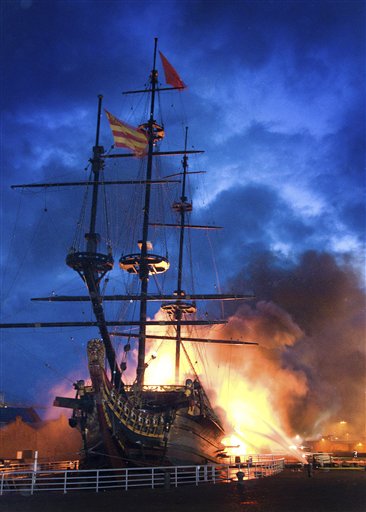
Sad news from the Netherlands last week. The historic replica ship Prins Willem caught fire and was totally consumed in the port of Den Helder, where it was a popular site for tourists and local maritime buffs alike. The original Prins Willem was the flagship of the Dutch East India Company, built in 1649 and wrecked off the coast of Madagascar in 1662.
The replica ship was built in the 1980s, and served as an ambassador from the Netherlands to Japan for many years. As an institute involved in the reconstruction of historic watercraft, including the Galveztown replica ship, we mourn the loss of this striking vessel and and our hearts go out to those maritime enthusiasts who built, sailed, cared for, and visited her. Seeing this majestic ship go up in flames cannot help bring back memories of the burning of Cutty Sark back in May 2007.
This event led to an announcement on the SubArch underwater archaeology discussion email list, which has lead to some interesting discussions related to fire prevention and fire-fighting on board ship in the 17th and 18th centuries. Rex Cowan, a shipwreck explorer known for his salvage of a number of Dutch wrecks including the Hollandia, offered to share an image of 17th century fire-fighting technology, which I said I’d post here on our LAMPosts blog:
This image depicts a Dutch ship at dock which has clearly been heavily damaged by fire. The fire-engine used to quell the flames is deployed on a smaller vessel on the right side foreground.
Here is a detail of the fire-engine and its vessel. It appears to be a four-person pump similar to a ship’s bilge pump, which would have fed seawater through a leather hose for use in putting out a fire on any ship in the vicinity. A burning ship would potentially threaten any ship in the harbor along with dockside warehouses or other buildings, not to mention the entire port itself.
Thanks for sharing this image, Rex!

